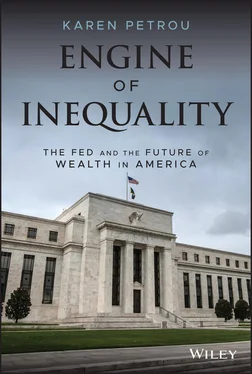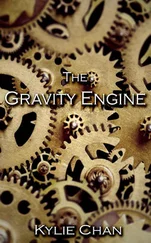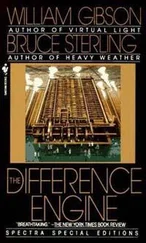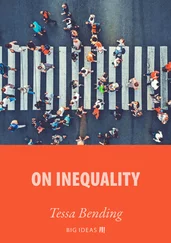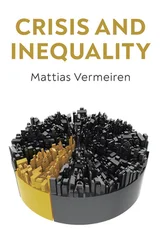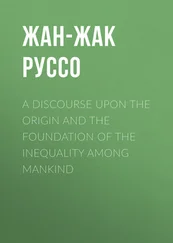Income and wealth may also not tell the whole inequality story. Conservatives disputing that America is in any way unequal avert their gaze from income and wealth to look only at what we own regardless of how much debt we took out to get it. 7 I do not use this approach because consumption is distorted by many factors, not least the fact that the richer one is, the more one saves rather than spends in proportion to income and the less debt is needed to fund consumption. 8 Further, measuring equality by how many cars, televisions, or air conditioners a household owns (as is sometimes done) confuses the often-larger numbers in lower-income households – two cars may well mean two earners are needed to maintain the same income found in a higher-wealth household with just one (probably more expensive) car.
However, one approach to “multidimensional” economic equality incorporates consumption data with income and wealth in a very interesting way. A Federal Reserve study examined households with the largest amounts of income, wealth, and consumption to see how households along these three dimensions fare from an economic-equality perspective. 9 Using this three-dimensional approach shows an even more unequal America after 2008 well ahead of COVID.
In 2007, half of all households that were in the top 5 percent of income were also in the top 5 percent of households in consumption and wealth. By 2016, 60 percent of the households with top 5 percent wealth were also in the top 5 percent of consumption or income. These gains for the top 5 percent in income, consumption, and wealth came at the expense of almost everyone else – the bottom 80 percent of households saw their share of income, consumption, and wealth fall still farther.
Unsurprisingly, economists have many ways to study income, wealth, distribution, and even how many households or individuals should be counted. 10 Still, I've found no objective, time-tested data to suggest that the United States is anything like the equality powerhouse President Trump asserted.
First to income and some hard numbers that make inequality all too real. One could of course assess the US in COVID's wake to make a strong inequality argument, but this might be countered by those saying it's unfair to take a snapshot of the US at the worst of times. So let's look instead at the end of 2019, the best of times since 2010. This is compelling evidence that Mr. Trump was wrong and the need to repair the inequality engine is urgent.
According to the Fed, 11 26 percent of adults in 2019 had a family income of less than $25,000, which was just about the federal poverty level for a family of four in the contiguous US. Another 10 percent had a family income above $25,000 but below $40,000. Thus, more than one-third of Americans had family income below middle class as many define it. 12
The top 20 percent had an average pretax income of $234,000 in 2018 (the most recent data available). 13 Even in this group, income is segmented – the top 5 percent had pretax incomes exceeding $416,000 on average in 2018. 14 At the same time, the bottom 20 percent made an average of $13,775 15 and as a whole earned only 3.1 percent of US pretax income. 16 Working-age adults in the bottom 50 percent group earned no more in 2014 than they did in real terms in 1980. 17 By contrast, the average income for the top 1 percent rose more than 200 percent between 1980 and 2014 to more than $1.3 million. 18 Put another way, the average earnings differential between the top 1 percent and bottom 50 percent was 27 times in 1980 but rose to 81 times in 2014. 19
What of the vaunted American middle class? Using the “Gini coefficient” – an established equality measure – the middle class disappears into a void left by far more wealth at the top and far less sliding down to the bottom. Simply put, a Gini index of zero means that everyone earns or owns the same amount of income or wealth – perfect equality; a Gini of one means that one person earns or owns it all. The Gini coefficient thus helps to tell us if America's long-cherished image as a nation of middle-class households is still true. Sadly, it isn't. 20
The Gini coefficient and survey data used by the Congressional Budget Office (CBO) show that the middle class took home a smaller slice of the income pie – i.e., it was “hollowed out” – by large income gains at the very top of the income distribution and by the descent of many once middle-class earners into lower-income groups from 1979 to 2016. 21 In 1970, middle-class families earned 62 percent of national income; in 2018, this was 43 percent. 22 Over the same period, the upper-income share grew from 29 percent to 48 percent, 23 and lower-income share fell from 10 percent to 9 percent. 24
The Federal Reserve Bank of Cleveland in 2020 looked at all of the most recent studies of the US middle class, 25 comparing the 2018 middle class to the far more vibrant one in the US of 1980 before inequality began to accelerate. Looking at real median household income for working-age adults and recalculating it to reflect higher consumption costs, this study corrects for problems such as US demographic shifts and oversimplified income measures that do not reflect recent hikes in the cost of living. It finds “fairly flat” real income growth for the working-age middle class as a whole, but much of this is due to the growth of two-income households and all of it is eviscerated when the cost of health care and housing are taken into account. These costs increased more than nominal middle-class income from 1980 to 2018, with the cost of education alone over this period increasing an astonishing 600 percent.
Unsurprisingly, wealth inequality has gone up as inexorably as that of income. In 1989, the top 1 percent of Americans had 24 percent; by the end of 2019, their share was 33 percent of US wealth, with top 1 percent wealth growing nearly $3 trillion in just the first half of 2019. 26 The bottom 50 percent did grow its infinitesimal share of the national wealth pie, bringing it up to 1.5 percent, 27 a negligible share and a tiny increase highlighted by President Trump and the Fed even as the wealth of the top 1 percent and the 90 to 99 percent group each grew over the first half of the year by more than the total wealth of the entire bottom 50 percent. 28
Before COVID, households in the bottom 50 percent of US wealth had about as much debt as assets, with the bulk of what wealth they have often to be found parked on the street. 29 In 2016, the bottom half of the US had less real wealth than it did in 1971. 30
As these data demonstrate, the fundamental engine of economic inequality is that the more you get, the more you keep unless gigantic market downturns or fiscal policy (e.g., inheritance taxes) takes it away. Wealthy households earning high returns on financial assets buoyed by rising market prices that are not purchased with debt acquire larger and larger shares of national wealth. In fact, 2 percentage points in wealth share equals 14 percentage points of total annual household income – it's a lot harder to get equal by earning your way to the top. 31 Given this, it's no wonder that economists honor F. Scott Fitzgerald's memorable get-rich-quick hero, using the “Great Gatsby Curve” to describe the relationship of income to wealth and resulting economic inequality.
The inequality engine also works in reverse. Just as the more you have, the more you keep absent policy intervention, so it is also that the less you have, the less you retain. Once set on a downward path due to lost wealth or income, it is increasingly difficult to recover lost momentum. For white male workers in the bottom half of the US income distribution, lost working hours may have been the primary source of income inequality over the past 52 years. 32 Working hours generally decline during recessions but then fail to recover when economists believe prosperity has returned. Often, white men who lose hourly wages also exit the workforce, making them disappear from traditional counts of the unemployed but of course heightening their own economic distress as well as that of their families. As the authors of this study conclude, “The cycle drives the trend.”
Читать дальше
